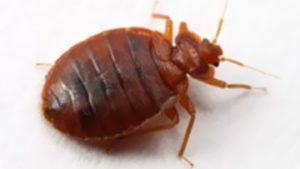Information about Pests
As with any shared living space, issues with bedbugs and other pests can arise while living in residence. When this happens, the Office of the Dean of Students and the Facilities Services Department work on an individual basis with students to eradicate the issue. Below we have included information about our pest control protocols and procedures. We have also outlined how to engage with the Office of the Dean of Students should you suspect that you have a pest issue.
Pests
Unwanted pests will, at times, make their home in communal living space, such as residence buildings. To ensure pests do not become an issue, Trinity encourages students to engage in pest prevention efforts.
Residents should:
- Keep their living space clean
- Keep food in sealed containers
- Not leave open food or dirty food containers in their space
- Not accumulate garbage in their room
- Not accumulate clutter in their room
- Clean up any spills and wipe down surfaces that have been in contact with food
- Use a mattress cover on their bed, between the mattress and the sheets
At Trinity College, all residence rooms are lightly cleaned weekly by our custodial staff. This frequent cleaning, including vacuuming of floors, light dusting and removal of garbage will help to prevent pest issues. If you suspect that you or your community has a pest issue, you are encouraged to report this issue promptly to the Office of the Dean of Students.
Suspect you have a pest problem?
Trinity College has an evidence-informed process for responding to a variety of pest issues. The exact process initiated will depend on the type of pest. In all cases, Trinity College will liaise with the impacted student to communicate the process, detail next steps, and answer any questions.
To file a pest report:
- Go to the Office of the Dean of Students or Welcome Desk and fill out a Pest Report. You will be asked to provide a pest sample or picture of the pest/signs of the pest for identification purposes.
- After reviewing your report, the Office of the Dean of Students will liaise with the Facilities Department to determine next steps.
- The Office of the Dean of Students will follow-up with you regarding next steps, which could include:
- Inspection by a K-9 unit (dogs trained to identify bugs)
- Initiation of pest eradication treatment
If you have further questions about pest prevention or reporting, please contact the Office of the Dean of Students.
